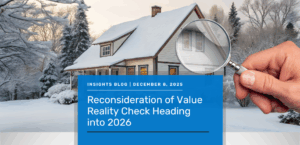The extent of climate change is rippling through our world, and the housing industry isn’t immune. As sea-levels rise, the intensity and frequency of storms increase, and coastal erosion pushes storms further inland. Economists and housing experts agree that millions of additional properties in the United States are at a greater risk for catastrophic damage each year.
The 2020 hurricane season has proved to be one for the record books. This year alone, the US Gulf Coast has been battered by seven named storms. Eta thrashed Florida twice, leaving tens of thousands without electricity and flooding beach communities. Louisiana saw at least five storms this year, including Zeta, which in late October pounded parts of New Orleans. In August, Hurricane Laura made landfall on the State’s coast as a Category 4 storm.
While wind and rain are significant factors, it is the threat of rising water that impacts home valuation within a storm’s path. This looming danger of hurricanes and the devastating floodwaters that come with them is an active area of real estate research today.
Three studies on the value of single-family residential homes in coastal areas have concluded that climate risk affects valuations. A 2018 study by researchers from Pennsylvania State University and the University of Colorado found that vulnerable homes sold for 6.6 percent less than unexposed homes. According to the study, the most susceptible properties — those that stand to be flooded after seas rise by just one-foot — were selling at a 14.7 percent discount.
A Harvard University analysis of values in Miami–Dade County found that properties at higher elevations appreciate more quickly than similar homes in lower elevations. First Street Foundation’s Flood Factor tool confirms in 2018 eight states along the Eastern Seaboard have lost a total of $14.1 billion in home values due to sea-level-rise flooding since 2005.
While FEMA declares disaster areas to help speed assistance to impacted homeowners, these FEMA designated zones cover entire counties and flag every property within them. However, not all may have been affected. The most valuable tool for obtaining post-disaster insight is often a physical property inspection. These post-disaster inspections are both labor and cost-intensive. Data and technology can reduce both while pinpointing the exact properties to have been likely impacted as a result of a natural disaster.
Obtaining an accurate valuation of a home in a disaster area is not simple. Veros Disaster Data fills the FEMA gaps to identify properties likely impacted. Using parcel boundaries, latitude and longitude, address information, and more, Veros creates two geographic areas that pertain to a disaster event: residential properties in the Core (inside the event) and residential properties in the Buffer (within ½ mile outside of the Core) to help you emerge strong post-disaster.
As the numbers of disasters grow each year, it is more important than ever to consider the impact of climate change on a large and micro scale. Hurricanes and coastal flooding may have a significant influence on your portfolio’s valuation. When disaster strikes… how strong is your portfolio? Veros knows. Now you can too. Contact us now to learn more: 1.866.458.3767 Option 2.




